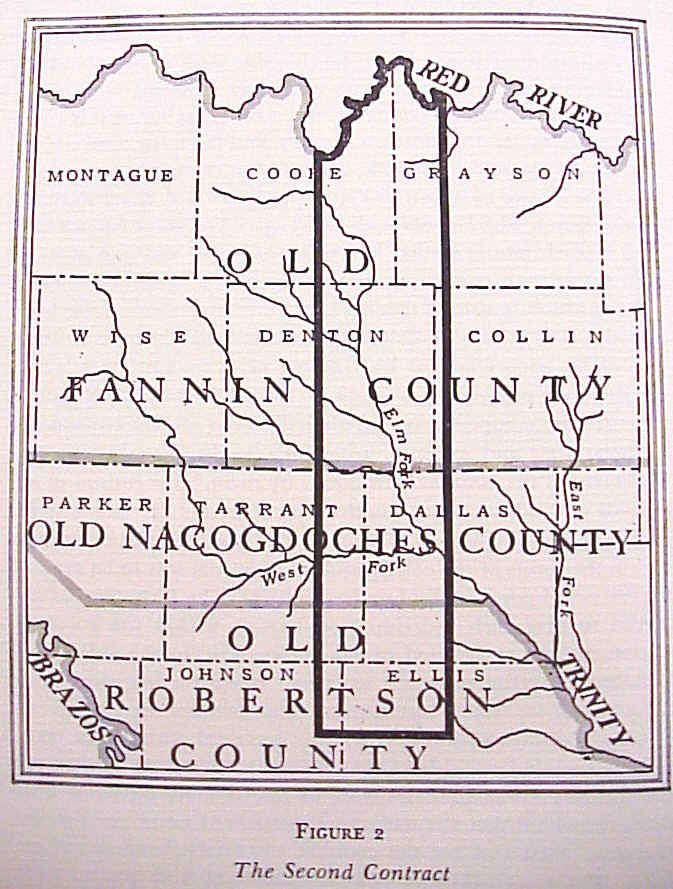One of the big questions has been "When did Andrew J. Clark arrive in Texas?" I thought the answer would lie in the date of his 320 acre single man headright in Dallas County. Aunt Charlyne included a small map in her book of his land grant that made it easy to find. The Library of Congress has a map on file from the Texas General Land Office showing original land surveys in Dallas County. The one I used is from December 1884. Texas is different from most other areas in the USA in that township and range are not used to plot land locations. Each plot retains the name of the person who received the original land grant and did the original survey. Early land claims and surveys were more like Spanish land grants in that they followed rivers and other natural boundaries. There are actually two small plots, totaling 320 acres, assigned to A.J. Clark on the Dallas County map from 1884.

When searching for these surveys on the Texas General Land Office (GLO) database, these two parcels are not found. There is an 1854 sale of 640 acres from Mary Kennady to A.J. Clark, but no record of the two A.J. Clark surveys or other A.J. Clark data from Dallas County. After inquiring at the Texas General Land Office, I was told that there might be other information in the Dallas County Clerk's Office. On their website I found a list of Dallas County survey abstracts listed by name. There was no A.J. Clark, but there were 3 abstracts under the name A.J. Clarke (with an E).
Two of those, #285 and #286, correspond with the two tracts on the map above. I plugged those abstract numbers into the GLO database and found the original land grant documents. There's no E on Clark on the documents, but it is listed with an E in Dallas County records.
You can actually download the entire document (multiple pages) as a PDF. The detailed description of abstract 285 and the little map fits the survey map well, but not perfectly. Well enough, I think. The same is true of abstract 286.
Now the interesting thing about this land grant (also abstract 286) is the date. It is much later than I expected, November 11, 1850. We know Andrew J. Clark was in Dallas county well before that date so why did he wait until 1850 to apply for his land grant? Also, he was married to Sarah Myers in April 1849 so why did he apply for a single man's 320 acre headright instead of the full 640 acre headright? Maybe he made the claim earlier and it wasn't surveyed until 1850? The document also says he emigrated to the Peters Colony of the Republic of Texas under the second contract. The second contract for the Peters Colony was issued November 9, 1841 and was replaced by the third contract on July 26, 1842.
It's exciting to narrow down A.J. Clark's emigration date, but it still does not explain why he waited so long to make his claim. I may have found the answer.
After seeing the Clark/Clarke confusion in the Dallas County/Texas GLO databases, I tried searching the GLO for both Andrew J. Clark and Clarke (with an E). That pulled up more interesting data including a land grant application from September 28, 1841 which states Andrew J. Clark entered the Republic of Texas in May 1840.
You will note that this document has "Cancelled July 6'(18)46" across the document. The document includes a description of 320 acres of land in Lamar County. There also seems to be a transfer to John Rattan through attorney Benjamin Bourland in July 1846, which might account for the cancellation. I suspect Andrew moved west shortly after earning this original headright and later sold or transferred it on deciding not to return east. Whether it was legal for him to take out a new headright in Dallas in 1850 remains a question of interest!












